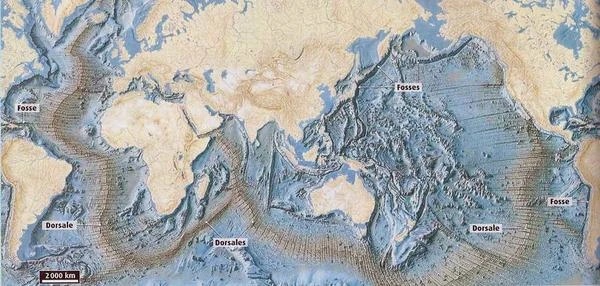
Image Description: Geographical map of the ocean floor and plate boundaries. The seafloor relief creates ripples on the sea surface that correspond to a mini topography of the seafloor. An oceanic ridge corresponds to a bump of water on the surface, several meters high, and an oceanic trench corresponds to a hollow of water on the surface. Thus, high-precision altimetry satellites (within the order of cm) allow mapping of the underwater relief. The satellite method of seafloor mapping brings significant improvement as ≈80% of the ocean surface was not covered by shipboard bathymetric sounders. Bathymetry is the underwater equivalent of altimetry; it refers to the measurement of ocean depth.
Seafloor relief is a complex and fascinating geomorphological feature that shapes the world's oceans. Understanding this relief is crucial for various scientific disciplines, including oceanography, geology, and marine biology.
The seafloor exhibits a variety of relief forms, ranging from vast abyssal plains to underwater mountain ranges, oceanic trenches, and mid-ocean ridges. These structures are the result of geological processes such as plate tectonics, volcanism, and erosion.
Satellites play a crucial role in measuring seafloor relief through advanced techniques such as altimetry and bathymetry.
Altimetry uses radar-equipped satellites to measure the height of the sea surface. By measuring variations in sea surface height, scientists can deduce the characteristics of the underwater relief. Areas where the sea surface is higher generally indicate underwater mountains or ridges, while lower areas may indicate trenches or abyssal plains.
Bathymetry is the science of measuring ocean depths. Satellites use sensors to measure the reflection of radar waves on the ocean surface, allowing the mapping of depths and underwater reliefs. This technique is particularly useful for exploring areas that are difficult to access for research vessels.
Knowledge of seafloor relief is essential for several practical applications:
Seafloor relief is a fascinating frontier of scientific exploration. Thanks to technological advancements, particularly the use of satellites for altimetry and bathymetry, we can better understand and map ocean depths. This knowledge is essential for navigation, resource exploration, scientific research, and natural risk management.